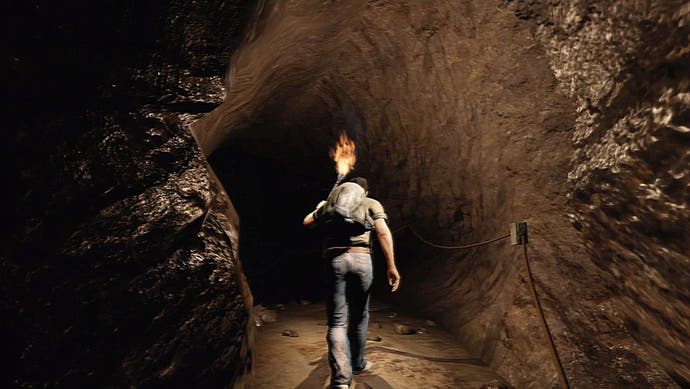Lost: The Video Game
It only took the bears two hours.
As I type, episode five of Lost's fourth season is showing in the USA. I'd like to know what happens in it. I'd like to know that a lot. If you couldn't care less, you might as well give up now; Ubisoft's Lost videogame, built around a story conceived by the TV show's executive producers, is not meant for you. There's probably enough here to grasp the basics of what's happening on this bizarre little island in the Pacific Ocean, but too much of it will be baffling or, worse, seem poorly justified. When John Locke tells you that the island has a will of its own, you'll look around at the invisibly walled jungle and beach and wonder if that's what he's on about.
It isn't, as disciples of the long-running series understand. Lost: The Video Game - or Lost: Via Domus, as it's known in the States - is designed to complement events in the first two seasons, so turn away now if you haven't got that far. It tells the story of a young man - another survivor of Oceanic Flight 815 - and his quest to recover his memory and understand the visions that he keeps experiencing of a young woman. Split into seven mini-episodes - complete with "Previously on Lost" bits at the start of each - it echoes the show's trick of inching through back-story via flashbacks as it floats through the present on a river of cliffhangers and people answering questions with riddles, sanctimony and bubblegum profundity.

When you wake up, it's to a wonderfully dense and detailed jungle rich with everything from banyan trees with their hollow-root hiding places to every manner of creeper, vine and long grass imaginable. As you pick through plane and human wreckage you come face to face with Kate, someone with whom you'll swap a lot of deep gazes and dialogue. Conversations unfold in the style of an old-days adventure game, with a selection of potential lines split across "Quest" and "General" categories. It's during this conversation that you experience your first flashback - to Kate's arrival on the plane, in handcuffs. Flashbacks show you torn-up Polaroid pictures and give you a camera with which to capture a moment to jog your memory, after which you can explore a small area to gather up to three further fragments of information. Then it's back to the present, where you can apply that information - you know Kate is a fugitive, and in putting this to her you're able to extract information, a process that sets the tone for puzzles that follow. It's all done with the show's trademark ears-draining-of-water whooshes and whomps. You'll feel right at home.
It's an action-adventure, then, with movement on left stick and camera on right, and with the needle pointing more toward adventure. You'll spend time on the beach, up near the hatch, and in various of the Dharma stations we've come to know and contemplate on message-boards, as well as creeping and scrambling through the thick jungle. You're only exposed to a dozen or so of the show's actual cast members - basically all the game needs to serve its plot and mechanics - and progress relies on looking at your current quest objective on the back-button's notepad and then either talking to someone, solving a simple puzzle or heading to a specific location. For instance, you blackmail Locke into helping you by going through the flashback process to "remember" that he used to be disabled - something he prefers to keep under wraps.

Other puzzles involve navigating the jungle using markers, often under pressure from - let's try not to cheapen the experience here - "hostile" elements. This once again speaks to the quality of Ubisoft's graphical work, as you click on a marker to find out where to go next and are either turned to face in the right direction or given a compass bearing and asked to swivel yourself around until you're on it. Actually picking the next marker out can be tricky in such thickly layered visuals, and in these sequences there are more paths through the jungle than you need - some offering up vaguely hidden items - and deviating or losing your bearings is genuinely hazardous to your sense of direction. If you get particularly lost, the game even offers to return you to your last checkpoint.


